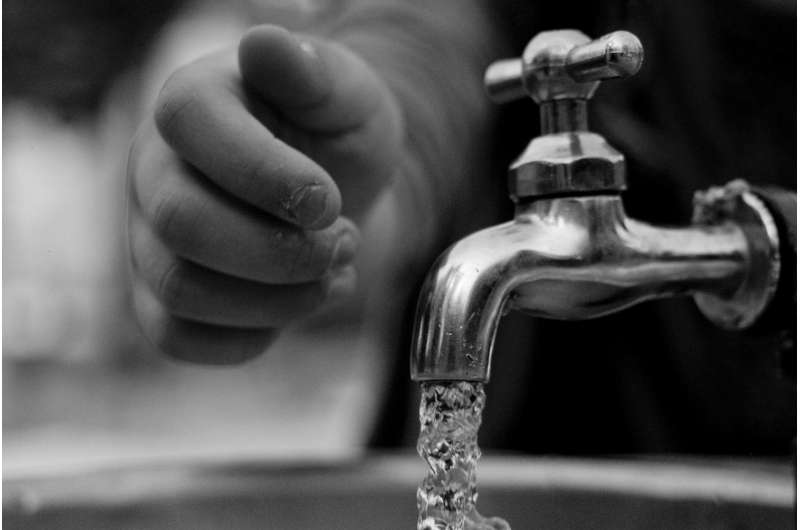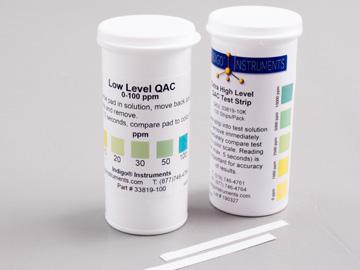[ad_1]

Numerous Americans take tap water for granted. H2o expenditures are usually a lot less high priced when compared to people’s other expenses, and faucet water has been a element of most Americans’ lives considering the fact that they had been born. For virtually 61 million Us residents, on the other hand, faucet h2o is possibly unavailable or untrusted. New investigate from Penn Condition and Northwestern University demonstrates for the to start with time that in the United States, steering clear of tap drinking water is involved with a 20% to 30% greater likelihood of encountering meals insecurity, or the incapacity to reliably purchase the foodstuff one demands owing to restricted means.
The scientists needed to take a look at irrespective of whether all those suffering from water insecurity—the lack of responsible access to a enough amount of safe and sound water—were a lot more possible to knowledge foodstuff insecurity. They used nationally representative info on faucet drinking water avoidance, which has been revealed in preceding study to be a responsible substitute evaluate, or proxy, for water insecurity, to much better comprehend the connection among h2o insecurity and food stuff insecurity in the United States.
“In the United States, coverage makers and the general community usually suppose that persons in our country have a lot of water to consume, but in excess of the very last eight to 10 years, it has grow to be increasingly crystal clear that is not the scenario. Even more, the access of h2o issues could increase beyond water by itself cleanse drinking water is also crucial for nourishment,” claimed Asher Rosinger, assistant professor of biobehavioral health and fitness and anthropology and guide researcher on this venture.
“Crises like the 1 in Flint, Michigan, have proven that some people’s drinking water is not safe,” he ongoing. “Meanwhile, information protection of the Flint crisis led to improved awareness and surveillance of h2o complications in other communities as very well as an increase in faucet water avoidance for people who could have safe faucet drinking water.”
About foodstuff insecurity
Food insecurity has an effect on tens of millions of persons domestically and two billion individuals around the world. The expertise of food items insecurity can vary from worrying about meals, to compromising on meals, to hunger.
Even though people today are typically mindful of the irritation and harm connected with hunger, there may be less recognition that food stuff insecurity is destructive even to individuals who hardly ever go hungry. Prior study has demonstrated that people who knowledge food insecurity encounter a host of diet-associated overall health challenges like coronary heart ailment, being overweight, and declines in memory, understanding and reasoning. Foods insecurity is also connected with a broad array of psychological difficulties, including despair, pressure and panic.
The hazard of h2o insecurity
Drinking water insecurity, as shown by tap water avoidance, may perhaps exacerbate food items insecurity in multiple approaches.
Tap water—when readily available and trusted—provides a easily out there, zero-sugar, and low-cost beverage. Prior investigate has proven that persons who keep away from faucet drinking water are a lot more possible to consume sugary drinks, and that those people today expend a lot more on drinks than many others. Faucet drinking water is a lot less expensive than bottled water, so ingesting bottled drinking water can divert money that would or else be made use of to acquire meals.
Rosinger’s prior investigation has revealed that this diversion of cash impacts lessen-cash flow homes and homes of colour extra than other American homes. “If men and women are keeping away from faucet water, they typically buy bottled h2o at an exponentially greater charge, and that requires absent cash they could commit on nutritious meals in their homes,” he mentioned.
Furthermore, tap drinking water is frequently essential to the two food preparation and cleanup. If people today simply cannot boil, clean, or steam food items simply because they mistrust or deficiency access to faucet drinking water, preparing even a easy food may possibly be tricky or not possible. Likewise, tap h2o is needed to clean dishes and any cookware just after a food. These boundaries to cooking may possibly improve people’s reliance on prepackaged food and restaurant meals, which tends to be extra calorie-dense, much less healthy, and—in the scenario of cafe food—more high-priced.
“A large amount of my prior study has examined why people stay away from faucet h2o,” Rosinger stated. “It all comes down to believe in, and rely on is normally difficult. The smell and taste of the h2o, any previous destructive activities with faucet h2o, and the narrative about tap drinking water in a person’s lifestyle: All of these can affect no matter if men and women drink their tap drinking water.”
Comprehending water insecurity
Applying info from a lot more than 31,000 grown ups who participated in the nationally representative Nationwide Overall health and Diet Evaluation Study, the scientists ran numerous analyses to take a look at the romantic relationship concerning tap drinking water avoidance and food stuff insecurity. They used tap drinking water avoidance as a proxy for drinking water insecurity in a few distinctive techniques. They analyzed details from people today who documented that they keep away from faucet water in all situations, men and women who drank no tap water on the day they were surveyed, and men and women who drank only bottled water on the working day they had been surveyed. Their results have been a short while ago revealed in Journal of the Academy of Nourishment and Dietetics.
People today who avoided tap drinking water experienced a 20% to 30% better probability of suffering foodstuff insecurity. These benefits held legitimate all over the analyze, from 2005 till 2018. Also, the scientists observed an increase in food stuff insecurity for people who averted their faucet drinking water subsequent the crisis in Flint, Michigan.
“Faucet drinking water avoidance and, as a result, h2o insecurity are intertwined with food insecurity, no issue how you slice the data,” explained Sera Young, associate professor of anthropology at Northwestern University and co-creator on this exploration. “We expected these phenomena to be related—we’ve found this marriage before in very low- and middle-profits international locations, but we were being surprised by how strong and constant the romantic relationship appears to be even in this article in the United States.
“Not only do we see that food insecurity is increasing about the yrs in the United States, we also see that people who stay away from tap drinking water have consistently bigger amounts of food stuff insecurity. This has vital implications for community well being nutrition plan and practice—if we treatment about foodstuff insecurity, we have to have to treatment about h2o insecurity.”
Hillary Bethancourt, research affiliate in the Office of Anthropology at Northwestern College, also contributed to this analysis.
Food insecurity and drinking water insecurity go hand in hand, examine finds
Asher Y. Rosinger et al, Tap h2o avoidance is affiliated with lessen food security in the US: Proof from NHANES 2005-2018, Journal of the Academy of Diet and Dietetics (2022). DOI: 10.1016/j.jand.2022.07.011
Quotation:
Insecure: New review inbound links faucet water avoidance and foodstuff insecurity (2022, August 2)
retrieved 9 August 2022
from https://medicalxpress.com/news/2022-08-insecure-one-way links-meals-insecurity.html
This document is subject matter to copyright. Apart from any truthful dealing for the intent of private review or investigation, no
element may possibly be reproduced without the created authorization. The material is provided for data reasons only.
[ad_2]
Source hyperlink







